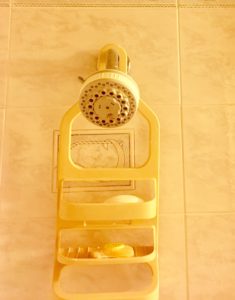When it's hot and humid, taking cold showers for spider veins may actually sound good! Of course, if the thought of an icy cold shower is unappealing, we get it. Frigid water hitting your body isn't exactly relaxing. But as it turns out, an icy-cold shower may be just what the doctor ordered if you want to prevent varicose veins. Plus this tip, and other suggestions for managing venous disease in summer, could help you find relief in the next few months. And it could stop the pain of an existing vein condition.

Why are cold showers for spider veins such a useful tool? Cold showers improve blood circulation--as your limbs get colder, blood rushes down from other parts of your body to warm them. When circulation improves, blood is less likely to pool in your veins. And, since pooling blood causes varicose veins to bulge and become visible beneath your skin, a daily cold shower can help keep this problem at bay. And for patients already dealing with painful spider veins,
Of course, improved blood flow also helps your overall cardiovascular health. It can also keep plaque from building up in your arteries, preventing the type of hardening we associate with peripheral arterial disease.
But those aren't all the benefits you may enjoy from daily cold showers. Icy water can boost your lymphatic system. And by boosting your lymphatic system, you can help prevent the build up of lymph material that causes lymphedema (swelling) in your lower legs.
While cold showers can offer preventative vein care, and temporary pain relief, they can't cure CVD (chronic venous disease) or other underlying conditions that may be causing your spider veins. For true relief, you will need to seek treatment from your local vein specialists.
Now, we know you can't take cold showers every day. But we can certainly offer other ways to stop CVD pain in the long, hot Houston summer. After all, hot weather may increase some symptoms of venous disease. These include:
In addition to taking cold showers for spider veins, here are a few more ways to manage CVD in the summer,
• Stay inside during the hottest hours of the day.
• Skip the tanning. Direct sunlight exposure raises your temperature, and further dilates your veins. Plus, you'll be lying still while you suntan. And that can contribute to blood pooling and more noticeable symptoms.
•Stay hydrated to avoid dehydration. And avoid salty snacks to prevent swelling. Also, sticking to a healthy vein diet can help you manage your vein disease in the summer...and all year long!
• Keep up with your exercise routines, but consider moving them indoors if the weather is too hot or humid.
• Loose clothing and comfortable shoes. Very tight garments are not advisable, as they hinder venous return, like heels.
• Stick to prescribed compression therapy, even when it's hot out. Even if you reduce your time in your special socks, a few hours a day can make a major difference!
Having said all that, we need you to remember that these tips will only manage your symptoms. You'll need to treat your CVD to enjoy lasting relief. So schedule a consultation with our Houston vein specialists today!

Scheduling
Please contact our dedicated specialists to schedule a consultation today.
2025 Texas Endovascular. All rights reserved. Website Design by Healthcare Success